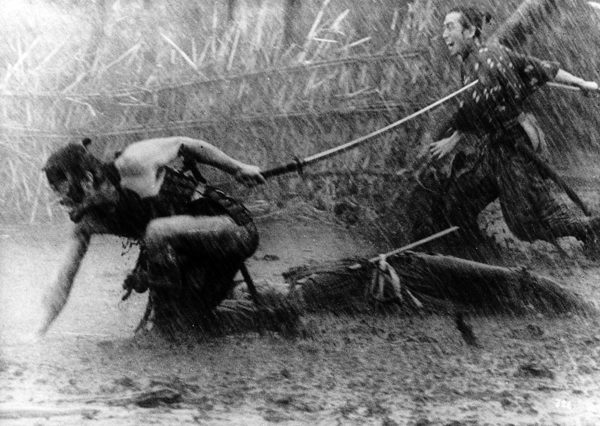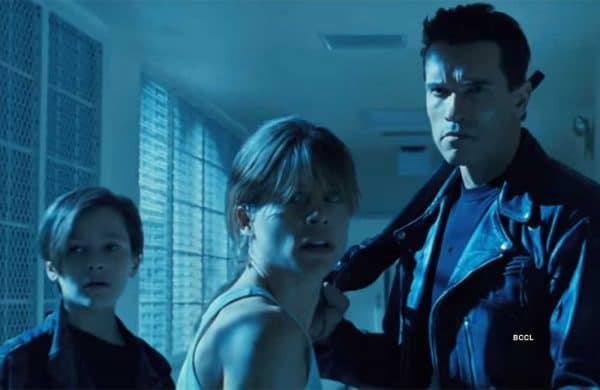We look at ten of the most influential action movies ever made…
The action genre excites and entertains like no other and it’s fair to say that the lasting appeal shows that audiences have long held the desire for escapism. Whether it’s Western shootouts at high noon, kung fu battles in the streets of Hong Kong, or high octane car chases through the streets of San Francisco, action has tended to dominate the box office for almost a century.
There have been a number of cornerstone films which have inspired generations of action cinema. Some films are so influential they end up spawning their very own sub-genre.
Occasionally, an action film’s influence ends up becoming a detriment because the films following in its wake end up being pale imitations, such as the spate of Taken copycats for a box office hit that in retrospect was solid but little more. Let’s look at ten of the most influential action movies ever made…
The General
Although this isn’t an all-out action film, it’s one of the most dynamic and groundbreaking films of the silent era. Buster Keaton’s comical hijinks and brilliant physical performances, perfectly suited the silent aesthetic.
Chaplin had similar gifts for comedy but with a different emphasis in many of his films, whilst Keaton often had a chaotic adventure or chase of some kind.
The daredevil displays by Keaton, and the elaborate and breathtaking stunts in his movies, would effectively inspire action cinema through the entire sound era, up until now. Without Keaton we also wouldn’t fully appreciate the notion of the daredevil actor. Would we have had Jackie Chan or Tom Cruise without Buster Keaton? His infamous clock stunt in Safety Last was lifted by Chan for Project A.
The train set pieces in The General are equally as iconic and still amazing to this day.
Seven Samurai
Akira Kurosawa was pretty good at rewriting the rulebooks. Rashomon’s non-linear narrative structure was fairly unique at the time, but the film’s success made it become even more of a popular device used by filmmakers like Kubrick and Tarantino in later years.
No stranger to action films by the time he took Seven Samurai to camera, Akira Kurosawa’s love of old Hollywood Westerns was clear, but he redefined the approach to framing, blocking and cutting action films.
Seven Samurai wasn’t merely a technical marvel (which still looks dazzling today thanks to some great remasters), it was a rollicking adventure story with engaging characters and powerful emotional beats. Also featuring one of the original uber cool heroes, Toshiro Mifune
In many ways, Seven Samurai shaped many of the facets common in blockbuster cinema today.
The Wild Bunch
The Western genre often has action at its core and the influence that cowboy cinema had on the action genre was huge. You could look at the John Ford epic Westerns, or the Sergio Leone Spaghetti Westerns, but stylistically, The Wild Bunch’s influence on action cinema is most significant.
The story itself had an interesting lean toward anti-heroes and harked back to the gangster films of James Cagney. Given the morally obtuse natures of these anti-heroes, victory can’t be obtained but they can go down in a blaze of glory.
Director Sam Peckinpah had a fascination with complicated protagonists from the wrong side of the law but more importantly, he had a love of pushing conventions aside with his approach to cutting action films. The use of quicker cuts and the liberal use of slow motion to capture almost balletic moments of violence effectively changed the game. Everyone from Brian De Palma, to John Woo, to Michael Bay, to the Wachowskis and a whole heap more, followed suit.
Enter The Dragon
Bruce Lee changed the game. He brought efficiency to martial arts screen fighting. His on-screen style was always blunt and to the point, differing from a more old-fashioned Wuxia style populating martial arts cinema in the decade prior.
There were no graceful and dance-like exchanges of blocks, kicks and punches. It was a swift ruthlessness that felt grounded.
Lee’s stoic and indestructible presence was something that many who followed, especially in martial arts cinema, tried to emulate. Enter the Dragon was his bridge from Chinese films to being a Hollywood player. The film essentially birthed the tournament fighting film and many followed in his wake, from Norris, to Van Damme, to limitless copycats that populated video stores in the 90s, starring the likes of Don ‘The Dragon’ Wilson.
The Driver
Look, there are a host of debatable selections for influential car chase movies. You might look at Bullitt which was one of the most iconic early films to capture the energy of a car chase from within the car itself, with aggressive low-angle gear shifts. The way Peter Yates’ stunning car chase was cut, was also way ahead of its time.
You may also look at the thrilling and dynamic, almost docu-styled car chase in The French Connection too, which undoubtedly influences films like The Bourne Supremacy.
However, The Driver has the requisite slick and dazzling car chases, that still look like they were shot today. Alongside the vehicular chases, you have the neo-noir aesthetics set to what’s a very action-centric movie. There’s the stoic and highly efficient and professional driver, as played by Ryan O’Neal in Walter Hills classic.
The film inspired Michael Mann, Nicolas Winding Refn, Edgar Wright, Michael Bay, the Transporter series and countless more.
Police Story
So you take the aforementioned Buster Keaton, then you take martial arts on cinema, seen in films like The Drunken Master and evolve it, blending physical comedy with kung fu, and insane stunts whilst shooting and cutting fight scenes sequentially in bite-sized pieces.
Jackie Chan, who effectively controlled the action design in most of his peak-era films (if not he, then often Sammo Hung) rewrote the rule book on how to choreograph, shoot and edit fight scenes.
With limitless imagination, Chan also made the backdrops and set dressings become key components of those fights. Chairs became springboards, an umbrella became a weapon, or a long pole in a shopping mall rising from the ceiling down to the ground floor, became a useful shortcut as he slid down it (taking out hundreds of string lights as he went).
No one had done what Chan had before. His action sequences have inspired thousands of films since, though rarely has anyone come up to par with such a unique blend of physical dynamism, gruelling fights and slapstick.
SEE ALSO: The Essential Jackie Chan Movies
Die Hard
Yes, Die Hard has probably had as much influence on its genre as any film ever made. This wasn’t the first film to pit a lone hero against a band of terrorists, but the success and quality of Die Hard effectively popularised a brand new sub-genre, ‘Die Hard in a…[insert location].
John McTiernan’s skilful blending of intense action, escalating odds, underdog heroism and humour felt somehow grounded in comparison to the theatrics of Stallone, Schwarzenegger and Chuck Norris around that era. Bruce Willis was a sardonic everyman with a slight shabbiness that made him unlike almost any action hero before him.
The film never forgets its primary remit to entertain either. Die Hard as a beautiful cocktail of elements, is still arguably one of the most perfect blockbuster action films ever made.
SEE ALSO: Die Hard at 35: The Story Behind the Seminal Action Movie Classic
Terminator 2: Judgment Day
James Cameron knows his shit. Terminator 2 set a benchmark for Blockbuster Sci-fi action. The modern era of action film, so reliant on CGI and massive set-pieces all goes back to T2.
We’d seen Die Hard, but what Cameron did was think, “How BIG can we go?” It’s a mentality that is now common business practice for the MCU or most mega-budget studio pics.
Cameron’s film has big-scale action set pieces, spectacular stunt work and pyrotechnics. It just felt bigger than anything we’d seen to that point but most importantly (where many imitators fail) it also managed to have dramatic weight and interesting characters.
Throw in the groundbreaking CGI, which is expertly composited into practical set pieces. There have been only enough big blockbuster action films to count on one hand since, which have matched Terminator 2. It influenced countless films, including The Matrix.
The Bourne Identity
A total counterpoint to James Bond, the Bourne trilogy proved to be a highly influential espionage action series.
It began with Doug Liman’s first before the series doubled down under Paul Greengrass. Matt Damon played an amnesiac hero and, as is particularly common now, was an unlikely action hero.
Fight sequences were kinetic and frantic, whilst our skilled hero was able to combine physicality with intellect, whether he was fighting toe to toe or having an intense car chase. For a good decade after the OG trilogy, countless films seemed to ape Bourne’s style and gritty intensity.
SEE ALSO: A Journey Into Chaos: Bringing The Bourne Identity to the Screen
John Wick

Perhaps one of the most influential films of very recent times has been John Wick. The fusion of frenetic mixed martial arts fight scenes, and close-quarter gunplay with neon-soaked noir aesthetics has now become an action default for copycat films and TV shows. Everyone aspires to make action films like John Wick, almost usurping the Bourne and Taken clones entirely (the latter especially).
Wick brilliantly melded together a host of recognisable tropes. We have the stoic Western-esque hero, the nearly indestructible martial arts hero who won’t let a high fall stop him, along with 90s-era Hong Kong style gunplay.
However, Chad Stahelski did a wonderful job across the four films of creating a vivid and engaging lore. This level of world-building, almost bordering on fantasy, is rare in what is otherwise straight-up revenge cinema. Likewise, it’s rare to see the cinematic artistry evident from the designs and the stunning cinematography.
SEE ALSO: Is John Wick the Best Action Franchise of All Time?
What’s the most influential action movie ever made? Let us know on our social channels @FlickeringMyth…
Tom Jolliffe is an award-winning screenwriter and passionate cinephile. He has a number of films out around the world, including When Darkness Falls, Renegades (Lee Majors and Danny Trejo) and War of The Worlds: The Attack (Vincent Regan), with more coming soon including Cinderella’s Revenge (Natasha Henstridge) and The Baby in the Basket (Maryam d’Abo and Paul Barber). Find more info at the best personal site you’ll ever see here.





















